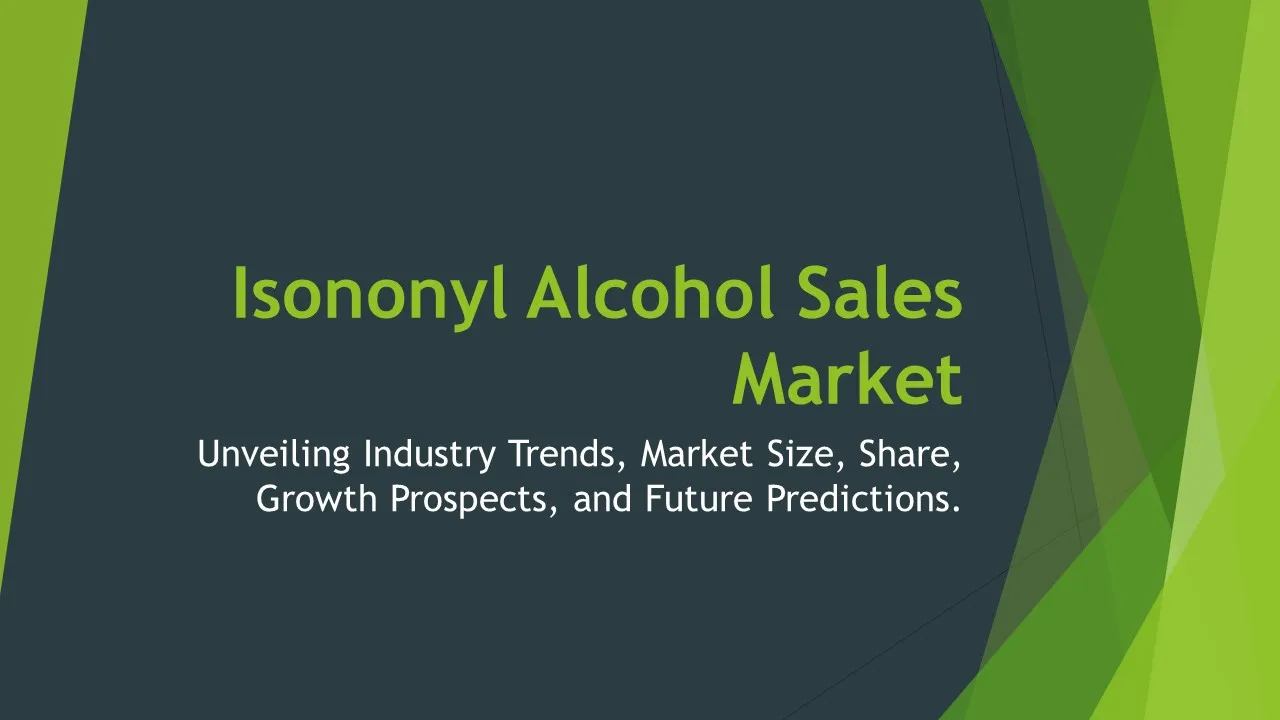Methylene Blue Sales
Methylene Blue Market Segments - by Product Type (Methylene Blue Tablets, Methylene Blue Injection, Methylene Blue Powder), Application (Medical, Laboratory Research, Textile Industry, Aquaculture, Others), Distribution Channel (Hospitals & Clinics, Online Pharmacies, Retail Pharmacies, Others), Ingredient Type (Methylene Blue Trihydrate, Methylene Blue Oxalate, Methylene Blue Chloride), and Region (North America, Europe, Asia Pacific, Latin America, Middle East & Africa) - Global Industry Analysis, Growth, Share, Size, Trends, and Forecast 2025-2035
- Report Preview
- Table Of Content
- Segments
- Methodology
Methylene Blue Sales Market Outlook
The global Methylene Blue market is projected to reach a value of approximately USD 150 million by 2035, exhibiting a compound annual growth rate (CAGR) of about 6% during the forecast period from 2025 to 2035. The growth of the Methylene Blue market can be attributed to its increasing applications across various industries, particularly in the medical and textile sectors. An uptick in research activities and the rise in chronic diseases necessitating medical treatments that utilize Methylene Blue are also significant driving factors. Additionally, the growing awareness regarding the benefits of Methylene Blue in aquaculture and laboratory research is anticipated to further bolster market growth. As the demand for high-quality medical and industrial products continues to surge, the Methylene Blue market is poised for substantial expansion.
Growth Factor of the Market
The Methylene Blue market is experiencing robust growth due to several interconnected factors that drive its demand across various sectors. Firstly, the rising prevalence of medical conditions that require effective therapeutic solutions, such as methemoglobinemia, has led to an increased utilization of Methylene Blue in clinical settings. Furthermore, its recognized potential in improving oxygen transport in blood and its antimicrobial properties are sparking interest in the pharmaceutical industry, resulting in expanded applications. Moreover, advancements in formulation and manufacturing processes are reducing the costs associated with Methylene Blue production, thereby making it more accessible to a wider range of users. The growing emphasis on sustainable aquaculture practices is also boosting the demand for Methylene Blue as an aquaculture treatment, enhancing fish health and productivity. Lastly, increasing investments in research and development, especially within the biotechnology sector, are contributing to the market's overall growth trajectory.
Key Highlights of the Market
- The global Methylene Blue market is expected to reach USD 150 million by 2035.
- CAGR of approximately 6% is anticipated during the forecast period 2025-2035.
- Increasing applications in the medical sector, particularly for treating methemoglobinemia.
- Rising demand in aquaculture for fish health management.
- Expanding research initiatives leading to new applications in laboratory settings.
By Product Type
Methylene Blue Tablets:
Methylene Blue tablets are widely used in various therapeutic settings, particularly in treating methemoglobinemia, where the blood cannot effectively carry oxygen. The tablet form offers the advantage of ease of administration, which is essential for outpatient treatments. The growing number of prescriptions for Methylene Blue tablets in hospitals and clinics is indicative of their rising acceptance among healthcare professionals. Additionally, the availability of Methylene Blue in tablet form has led to increased patient compliance due to its simplicity and convenience, further driving its market growth. Recent advancements in tablet formulation are enhancing the bioavailability of Methylene Blue, making it a preferred choice amongst both physicians and patients. The segment is expected to witness significant growth during the forecast period, as healthcare providers focus on innovative delivery methods that improve treatment outcomes.
Methylene Blue Injection:
Methylene Blue injections are critical in emergency medicine due to their rapid therapeutic action, especially in severe cases of methemoglobinemia. This form of Methylene Blue is administered intravenously, ensuring immediate effects which are vital in acute medical situations. The growth in the Methylene Blue injection segment is closely tied to the expansion of emergency care services and the increasing incidence of blood-related disorders. Hospitals are increasingly incorporating Methylene Blue injections into their treatment protocols, further solidifying its role in critical care settings. Additionally, advancements in sterile manufacturing practices have improved the safety and efficacy of Methylene Blue injections, making them a trustworthy option for healthcare providers. This segment is anticipated to show strong growth as the demand for fast-acting medical interventions continues to rise.
Methylene Blue Powder:
The Methylene Blue powder segment is primarily driven by its extensive use in laboratory research and industrial applications. The powder form is highly versatile, making it suitable for various experimental conditions, particularly in microbiological studies and dyeing processes in the textile industry. As laboratory research continues to expand globally, the demand for high-quality Methylene Blue powder is expected to increase significantly. This segment benefits from the rising trend of using Methylene Blue as a staining agent in histology and cytology, where it aids in visualizing cellular structures. The availability of bulk purchasing options for laboratories contributes to the growth of the Methylene Blue powder market, as researchers seek cost-effective solutions for their studies. Furthermore, innovations in powder formulation are enhancing its stability and effectiveness, making it a staple in many research institutions.
By Application
Medical:
The medical application of Methylene Blue is one of the most significant contributors to the market's growth. Its primary therapeutic use for treating methemoglobinemia has been well established, and ongoing research is uncovering additional benefits of Methylene Blue, including its potential as an adjunct therapy for various conditions such as Alzheimer's disease and certain infections. The increasing prevalence of metabolic disorders and the rising number of patients requiring emergency interventions are driving the demand for Methylene Blue in healthcare settings. Hospitals and clinics are integrating Methylene Blue into their treatment protocols, thereby enhancing patient care and outcomes. Moreover, the growing trend toward personalized medicine is likely to further enhance the utilization of Methylene Blue in targeted therapeutic regimens.
Laboratory Research:
In laboratory research, Methylene Blue is frequently used as a stain and reagent in various biochemical assays. Its role as a redox indicator is invaluable in multiple experimental applications, including microbiology, where it assists in identifying bacterial species. The increase in biotechnology and pharmaceutical research activities creates a robust demand for Methylene Blue in laboratories worldwide. Moreover, its use in photodynamic therapy is under investigation for its potential in cancer treatment, further expanding its foothold in research applications. The growth of the laboratory research segment is supported by increasing funding for scientific research and the establishment of new laboratories globally, which are continuously seeking reliable reagents for their studies.
Textile Industry:
Methylene Blue's application in the textile industry is primarily as a dye, known for its vibrant blue color and excellent fastness properties on fabrics. The increasing demand for textiles and fashion apparel is significantly driving the Methylene Blue market in this sector. As sustainable practices become more prominent within the industry, there is a growing interest in using eco-friendly dyes like Methylene Blue, which meet regulatory standards while offering high performance. Companies are looking to innovate their dyeing processes to include Methylene Blue as a sustainable option, which is anticipated to further enhance its market share. The textile sector's growth due to rising consumer demand for varied textile products is expected to positively impact the Methylene Blue market in the coming years.
Aquaculture:
The aquaculture industry is another crucial application area for Methylene Blue, used primarily as a treatment for various fish diseases and to prevent fungal infections during the hatching of eggs. With the global rise in seafood consumption and the expansion of aquaculture farms, the demand for Methylene Blue is on the rise. Its properties as an antiseptic and antifungal agent make it a popular choice among aquaculture practitioners to maintain fish health and improve yield. The increasing awareness of the importance of sustainable aquaculture practices is further enhancing the market for Methylene Blue as it helps in producing healthier fish stocks. The segment is expected to see substantial growth due to the rising investments in aquaculture technology and practices aimed at improving productivity.
By Distribution Channel
Hospitals & Clinics:
The hospital and clinic segment plays a pivotal role in the distribution of Methylene Blue, particularly due to its critical medical applications. Hospitals are the primary points of care for patients requiring immediate treatment for conditions like methemoglobinemia, where Methylene Blue is utilized as a first-line therapy. The continuous growth of healthcare infrastructure and the increasing number of hospital admissions are driving the demand for Methylene Blue in these settings. Moreover, hospitals are investing in better stock management systems to ensure that essential medications, including Methylene Blue, are readily available for emergencies. This segment's growth is supported by an emphasis on improving patient outcomes and the expanding role of hospitals in managing a wide range of health conditions.
Online Pharmacies:
Online pharmacies have emerged as a significant distribution channel for Methylene Blue, providing convenience and accessibility to patients and healthcare practitioners. The rise of e-commerce has transformed the way consumers purchase medications, with many opting for online platforms due to their ability to offer competitive pricing and home delivery options. This trend has been particularly pronounced during and after the COVID-19 pandemic, as more individuals turned to online services for their healthcare needs. Online pharmacies are increasingly stocking Methylene Blue in various forms, making it readily available to a larger audience. As regulatory frameworks evolve to support online sales of pharmaceuticals, this distribution channel is expected to see exponential growth in the coming years.
Retail Pharmacies:
Retail pharmacies represent a traditional yet vital distribution channel for Methylene Blue, serving as accessible locations for patients to obtain their medications. The consistent demand for Methylene Blue in community pharmacies is driven by its medical applications and the growing awareness among patients about its benefits. Retail pharmacies are focusing on stocking a range of Methylene Blue products, including tablets and solutions, to cater to diverse consumer needs. With the increasing trend of self-medication, more patients are seeking pharmacies for their therapeutic needs, thereby boosting sales in this segment. The integration of value-added services, such as consultations and home delivery, is expected to enhance the role of retail pharmacies in the Methylene Blue market.
Others:
Under the 'Others' category, various niche distribution channels contribute to the accessibility of Methylene Blue. These can include specialty drugstores, health food stores, and even veterinary clinics, where Methylene Blue may be used for animal care. The growth in alternative and holistic healthcare practices has led to a rise in demand for Methylene Blue through these unconventional channels. As consumers become more aware of the various benefits of Methylene Blue, its availability in diverse outlets is likely to increase. Additionally, collaborations with healthcare providers and pharmaceutical companies are expected to enhance the distribution of Methylene Blue in these alternative settings, further driving growth in the overall market.
By Ingredient Type
Methylene Blue Trihydrate:
Methylene Blue Trihydrate is one of the most commonly utilized forms of Methylene Blue, particularly in the medical field. This hydrated form is preferred for its stability and efficacy in various applications. It is predominantly used in pharmaceuticals for treating methemoglobinemia, as well as in laboratory settings where its staining properties are required. The stability of Methylene Blue Trihydrate ensures that it maintains its effectiveness even under varying storage conditions, making it an ideal choice for healthcare providers and researchers. As the demand for reliable and effective Methylene Blue products continues to grow, Methylene Blue Trihydrate is expected to maintain a significant market share.
Methylene Blue Oxalate:
Methylene Blue Oxalate is another important derivative of Methylene Blue, often used in research applications and specific therapeutic protocols. Its formulation allows for different solubility properties, which can be advantageous in specific experimental conditions. This form is particularly favored in laboratory research due to its versatility and ability to provide reliable results in various assays. The growing emphasis on research and development within the biotechnology sector is likely to drive the demand for Methylene Blue Oxalate. With increasing investments in laboratory research and a focus on innovative therapeutic applications, the market share of Methylene Blue Oxalate is expected to witness considerable growth.
Methylene Blue Chloride:
Methylene Blue Chloride, while less common than its counterparts, still holds importance in certain industrial applications. Its chemical properties make it suitable for use in specific dyeing processes, particularly in the textile industry. Additionally, it may be utilized in laboratory settings for niche research purposes. The growing emphasis on environmentally friendly practices within industries is influencing the demand for Methylene Blue Chloride, as companies seek sustainable dyeing agents that align with regulatory standards. Although this ingredient type may represent a smaller segment of the overall Methylene Blue market, it is poised for growth as sustainability becomes a focal point across various sectors.
By Region
The North American region holds a prominent position in the global Methylene Blue market, accounting for approximately 35% of the total market share in 2025. Factors such as advanced healthcare infrastructure, a high prevalence of chronic diseases, and significant investments in research and development contribute to the region's dominance. The United States, in particular, is a significant consumer of Methylene Blue, driven by its extensive medical applications in hospitals and clinics. Additionally, the increasing awareness of Methylene Blue's potential in laboratory research is further enhancing its demand in the region. The North American Methylene Blue market is expected to grow at a CAGR of 5.5% during the forecast period, reflecting a robust outlook.
In Europe, the Methylene Blue market is projected to experience steady growth, driven by its diverse applications across various sectors, including healthcare, textile, and research. The region is expected to capture approximately 30% of the market share in 2025, with key countries such as Germany, France, and the United Kingdom leading in demand. The growing trend towards sustainable practices in industries, particularly in textiles, is anticipated to boost the market for Methylene Blue in Europe. Additionally, the presence of several research institutions focusing on the therapeutic benefits of Methylene Blue is expected to contribute significantly to the regional market's growth. The European Methylene Blue market is anticipated to expand at a CAGR of 6.2% over the forecast period.
Opportunities
As the global demand for Methylene Blue continues to rise, numerous opportunities are emerging across various sectors that can be capitalized on by manufacturers and distributors. One significant opportunity lies in the healthcare industry, where ongoing research into the therapeutic properties of Methylene Blue is uncovering new potential applications beyond its established uses. For instance, its antioxidant properties and potential neuroprotective effects are being studied for their relevance in treating neurodegenerative diseases. Companies that invest in research and development to explore these possibilities can position themselves favorably in the market, opening up new revenue streams and enhancing their competitive edge. Furthermore, developing advanced formulations that increase the stability and bioavailability of Methylene Blue can lead to enhanced therapeutic efficacy, making it an attractive option for healthcare providers.
Another opportunity exists within the aquaculture industry, which is experiencing rapid growth due to the rising global demand for seafood. Methylene Blue's application as a treatment for fish diseases presents a lucrative avenue for businesses involved in aquaculture. As sustainability becomes a key focus within this sector, manufacturers can leverage Methylene Blue's eco-friendly profile to cater to the increasing number of aquaculture farms seeking sustainable solutions for fish health management. Additionally, expanding distribution channels, particularly through online pharmacies and e-commerce platforms, can enhance access to Methylene Blue for both consumers and businesses. By tapping into these opportunities, stakeholders can significantly increase their market presence and contribute to the overall growth of the Methylene Blue industry.
Threats
Despite the promising growth trajectory of the Methylene Blue market, various threats could impede its progress. One significant concern is the potential regulatory challenges associated with pharmaceutical products, especially in the medical sector. As governments worldwide continue to tighten regulations surrounding the approval and distribution of pharmaceuticals, manufacturers may face increased compliance costs and delays in product launches. Additionally, the competition from alternative therapies and treatments could also limit the market share of Methylene Blue. As new therapeutic agents emerge, the market may witness a shift in preference among healthcare providers, which could negatively impact Methylene Blue's utilization in clinical settings.
Moreover, the volatility in raw material prices used in the production of Methylene Blue can also pose threats to the market. Fluctuations in the availability and cost of these materials can lead to production challenges, impacting supply chain operations and profit margins for manufacturers. Additionally, the potential for adverse side effects associated with Methylene Blue usage, particularly in high doses or prolonged treatments, may lead to increased scrutiny from regulatory bodies and healthcare professionals. These factors combined may present significant obstacles that stakeholders must navigate to ensure sustained growth in the Methylene Blue market.
Competitor Outlook
- Thermo Fisher Scientific
- Merck KGaA
- Sigma-Aldrich
- Abcam Plc
- Alfa Aesar
- Acros Organics
- Spectrum Chemical Manufacturing Corp.
- VWR International
- Santa Cruz Biotechnology, Inc.
- Panreac Química, S.L.U.
- Fisher Scientific
- Lonza Group AG
- Sunozaure Corporation
- Beijing Ciyun Biotech Co., Ltd.
- Hangzhou J&H Chemical Co., Ltd.
The competitive landscape of the Methylene Blue market is characterized by a diverse array of players, ranging from large pharmaceutical companies to specialized chemical manufacturers. These companies are continuously evolving their strategies to maintain market share and enhance their product offerings. Key players are investing in research and development to expand the applications of Methylene Blue, thereby creating opportunities for growth. Furthermore, strategic partnerships and collaborations among firms are becoming increasingly common as companies seek to leverage each other's strengths to enhance their market presence.
One notable company in the Methylene Blue market is Thermo Fisher Scientific, known for its broad portfolio of laboratory supplies and reagents, including Methylene Blue. The company emphasizes innovation and quality, ensuring that its products meet the stringent requirements of various industries. In addition, Merck KGaA has a strong foothold in the pharmaceutical and life sciences sector, offering a wide range of Methylene Blue products tailored for both medical and research applications. Their commitment to sustainability and ethical practices aligns with the growing demand for eco-friendly solutions in healthcare and industry.
Another significant player is Sigma-Aldrich, a global leader in supplying chemicals and reagents for research and development. Their extensive range of Methylene Blue products is aimed at meeting the needs of various sectors, including pharmaceuticals and academia. The company's focus on high-quality standards and comprehensive customer support positions it favorably in the market. Furthermore, Acros Organics is recognized for its commitment to providing high-purity chemicals, including Methylene Blue, catering to the needs of specialized applications in laboratories and research institutions. Their strategic initiatives aimed at expanding product accessibility and customer engagement further contribute to their competitive edge in the Methylene Blue market.
1 Appendix
- 1.1 List of Tables
- 1.2 List of Figures
2 Introduction
- 2.1 Market Definition
- 2.2 Scope of the Report
- 2.3 Study Assumptions
- 2.4 Base Currency & Forecast Periods
3 Market Dynamics
- 3.1 Market Growth Factors
- 3.2 Economic & Global Events
- 3.3 Innovation Trends
- 3.4 Supply Chain Analysis
4 Consumer Behavior
- 4.1 Market Trends
- 4.2 Pricing Analysis
- 4.3 Buyer Insights
5 Key Player Profiles
- 5.1 Abcam Plc
- 5.1.1 Business Overview
- 5.1.2 Products & Services
- 5.1.3 Financials
- 5.1.4 Recent Developments
- 5.1.5 SWOT Analysis
- 5.2 Alfa Aesar
- 5.2.1 Business Overview
- 5.2.2 Products & Services
- 5.2.3 Financials
- 5.2.4 Recent Developments
- 5.2.5 SWOT Analysis
- 5.3 Merck KGaA
- 5.3.1 Business Overview
- 5.3.2 Products & Services
- 5.3.3 Financials
- 5.3.4 Recent Developments
- 5.3.5 SWOT Analysis
- 5.4 Sigma-Aldrich
- 5.4.1 Business Overview
- 5.4.2 Products & Services
- 5.4.3 Financials
- 5.4.4 Recent Developments
- 5.4.5 SWOT Analysis
- 5.5 Acros Organics
- 5.5.1 Business Overview
- 5.5.2 Products & Services
- 5.5.3 Financials
- 5.5.4 Recent Developments
- 5.5.5 SWOT Analysis
- 5.6 Lonza Group AG
- 5.6.1 Business Overview
- 5.6.2 Products & Services
- 5.6.3 Financials
- 5.6.4 Recent Developments
- 5.6.5 SWOT Analysis
- 5.7 Fisher Scientific
- 5.7.1 Business Overview
- 5.7.2 Products & Services
- 5.7.3 Financials
- 5.7.4 Recent Developments
- 5.7.5 SWOT Analysis
- 5.8 VWR International
- 5.8.1 Business Overview
- 5.8.2 Products & Services
- 5.8.3 Financials
- 5.8.4 Recent Developments
- 5.8.5 SWOT Analysis
- 5.9 Sunozaure Corporation
- 5.9.1 Business Overview
- 5.9.2 Products & Services
- 5.9.3 Financials
- 5.9.4 Recent Developments
- 5.9.5 SWOT Analysis
- 5.10 Thermo Fisher Scientific
- 5.10.1 Business Overview
- 5.10.2 Products & Services
- 5.10.3 Financials
- 5.10.4 Recent Developments
- 5.10.5 SWOT Analysis
- 5.11 Panreac QuÃÂmica, S.L.U.
- 5.11.1 Business Overview
- 5.11.2 Products & Services
- 5.11.3 Financials
- 5.11.4 Recent Developments
- 5.11.5 SWOT Analysis
- 5.12 Santa Cruz Biotechnology, Inc.
- 5.12.1 Business Overview
- 5.12.2 Products & Services
- 5.12.3 Financials
- 5.12.4 Recent Developments
- 5.12.5 SWOT Analysis
- 5.13 Beijing Ciyun Biotech Co., Ltd.
- 5.13.1 Business Overview
- 5.13.2 Products & Services
- 5.13.3 Financials
- 5.13.4 Recent Developments
- 5.13.5 SWOT Analysis
- 5.14 Hangzhou J&H Chemical Co., Ltd.
- 5.14.1 Business Overview
- 5.14.2 Products & Services
- 5.14.3 Financials
- 5.14.4 Recent Developments
- 5.14.5 SWOT Analysis
- 5.15 Spectrum Chemical Manufacturing Corp.
- 5.15.1 Business Overview
- 5.15.2 Products & Services
- 5.15.3 Financials
- 5.15.4 Recent Developments
- 5.15.5 SWOT Analysis
- 5.1 Abcam Plc
6 Market Segmentation
- 6.1 Methylene Blue Sales Market, By Application
- 6.1.1 Medical
- 6.1.2 Laboratory Research
- 6.1.3 Textile Industry
- 6.1.4 Aquaculture
- 6.1.5 Others
- 6.2 Methylene Blue Sales Market, By Product Type
- 6.2.1 Methylene Blue Tablets
- 6.2.2 Methylene Blue Injection
- 6.2.3 Methylene Blue Powder
- 6.3 Methylene Blue Sales Market, By Ingredient Type
- 6.3.1 Methylene Blue Trihydrate
- 6.3.2 Methylene Blue Oxalate
- 6.3.3 Methylene Blue Chloride
- 6.4 Methylene Blue Sales Market, By Distribution Channel
- 6.4.1 Hospitals & Clinics
- 6.4.2 Online Pharmacies
- 6.4.3 Retail Pharmacies
- 6.4.4 Others
- 6.1 Methylene Blue Sales Market, By Application
7 Competitive Analysis
- 7.1 Key Player Comparison
- 7.2 Market Share Analysis
- 7.3 Investment Trends
- 7.4 SWOT Analysis
8 Research Methodology
- 8.1 Analysis Design
- 8.2 Research Phases
- 8.3 Study Timeline
9 Future Market Outlook
- 9.1 Growth Forecast
- 9.2 Market Evolution
10 Geographical Overview
- 10.1 Europe - Market Analysis
- 10.1.1 By Country
- 10.1.1.1 UK
- 10.1.1.2 France
- 10.1.1.3 Germany
- 10.1.1.4 Spain
- 10.1.1.5 Italy
- 10.1.1 By Country
- 10.2 Asia Pacific - Market Analysis
- 10.2.1 By Country
- 10.2.1.1 India
- 10.2.1.2 China
- 10.2.1.3 Japan
- 10.2.1.4 South Korea
- 10.2.1 By Country
- 10.3 Latin America - Market Analysis
- 10.3.1 By Country
- 10.3.1.1 Brazil
- 10.3.1.2 Argentina
- 10.3.1.3 Mexico
- 10.3.1 By Country
- 10.4 North America - Market Analysis
- 10.4.1 By Country
- 10.4.1.1 USA
- 10.4.1.2 Canada
- 10.4.1 By Country
- 10.5 Methylene Blue Sales Market by Region
- 10.6 Middle East & Africa - Market Analysis
- 10.6.1 By Country
- 10.6.1.1 Middle East
- 10.6.1.2 Africa
- 10.6.1 By Country
- 10.1 Europe - Market Analysis
11 Global Economic Factors
- 11.1 Inflation Impact
- 11.2 Trade Policies
12 Technology & Innovation
- 12.1 Emerging Technologies
- 12.2 AI & Digital Trends
- 12.3 Patent Research
13 Investment & Market Growth
- 13.1 Funding Trends
- 13.2 Future Market Projections
14 Market Overview & Key Insights
- 14.1 Executive Summary
- 14.2 Key Trends
- 14.3 Market Challenges
- 14.4 Regulatory Landscape
Segments Analyzed in the Report
The global Methylene Blue Sales market is categorized based on
By Product Type
- Methylene Blue Tablets
- Methylene Blue Injection
- Methylene Blue Powder
By Application
- Medical
- Laboratory Research
- Textile Industry
- Aquaculture
- Others
By Distribution Channel
- Hospitals & Clinics
- Online Pharmacies
- Retail Pharmacies
- Others
By Ingredient Type
- Methylene Blue Trihydrate
- Methylene Blue Oxalate
- Methylene Blue Chloride
By Region
- North America
- Europe
- Asia Pacific
- Latin America
- Middle East & Africa
Key Players
- Thermo Fisher Scientific
- Merck KGaA
- Sigma-Aldrich
- Abcam Plc
- Alfa Aesar
- Acros Organics
- Spectrum Chemical Manufacturing Corp.
- VWR International
- Santa Cruz Biotechnology, Inc.
- Panreac QuÃmica, S.L.U.
- Fisher Scientific
- Lonza Group AG
- Sunozaure Corporation
- Beijing Ciyun Biotech Co., Ltd.
- Hangzhou J&H Chemical Co., Ltd.
- Publish Date : Jan 21 ,2025
- Report ID : CH-20403
- No. Of Pages : 100
- Format : |
- Ratings : 4.5 (110 Reviews)









